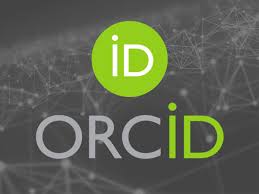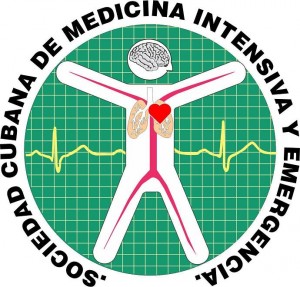Cytokine storm in SARS-CoV-2 (COVID-19) infection
Keywords:
COVID-19, risk factor's, symptom, diagnosis, treatmentAbstract
Introduction: Cytokine storm is the severe immune reaction whereby the body releases too many cytokines into the blood very quickly.
Objective: To describe the essential theoretical bases of cytokine storm produced by SARS-CoV-2 (COVID-19).
Acquisition of evidence: A bibliographic review was carried out in Bibliomed, Scielo, PubMed, Scopus, Wiley Open Access databases, from March to June 2020, on the concept of cytokines, types, definition of cytokine storm, pathophysiology, symptoms, complementary, diagnosis and treatment. The keywords were used SARS-CoV-2, risk factors, symptoms, complementary and treatment. The languages consulted were Spanish and English. Fifty articles published between 2017 and 2020 were selected.
Results: A monograph on cytokine storms was prepared, using the following knowledge nuclei: concept of cytokines, types, definition of cytokine storm, pathophysiology, risk factors, symptoms, complementary, diagnosis and treatment.
Conclusions: Cytokine storm is a state of hyperinflammation, often fatal and irreversible, that develops mainly in patients with associated comorbidities. patients have better chances of recovery when it is early detected (elevated D-Dimer, Protein C, Ferritin). There are different drugs to treat this medical emergency, but their efficacy is still a matter of debate.
Downloads
References
1. Davidson S, Maini MK, Wack A. Disease promoting effects of type I interferons in viral, bacterial, and coinfections. Journal of interferon and cytokine research. 2015;35(4):252-64. Disponible en: https://doi.org/10.1089/jir.2014.0227
2. Channappanavar R, Perlman S. Pathogenic human coronavirus infections: causes And consequences of cytokine storm and immunopathology. Semin Inmuno pathol. 2017;(39):529-39. Disponible en: https://doi.org/10.1007/s00281-017-0629-x
3. López Pérez GT, Ramírez SMLP, Torres AMS. Participantes de la respuesta inmunológica ante la infección por SARS-CoV-2. Alerg Asma Inmunol Pediatr. 2020;29(1):5-15. Doi: https://dx.doi.org/10.35366/93321
4. Sarzi Puttini P, Giorgi V, Sirroti S, Marroto D, Ardizzone S, Rizzardini G, et al. COVID-19, cytokines and immunosuppression: we learn from severe acute respiratory syndrome? Clin Exp Rheumatol. 2020 [citado: 15/06/2020];38(2):337-42. Disponible en: https://pubmed.ncbi.nlm.nih.gov/32202240/
5. Huang C, Wang Y, Li X, Ren L, Zhao J, Hu Y, et al. Clinical features of patients infected with 2019 novel coronavirus in Wuhan, China. Lancet. 2020;395(10223):497-506. Doi: https://doi.org/10.1016/S01406736(20)30183-5
6. Kritas SK, Ronconi G, Caraffa A, Gallenga CE, Ross R, Conti P. Mast cells contribute to coronavirus-induced inflammation: new anti-inflammatory strategy. J Biol Regul Homeost Agents. 2020;34(1). Doi: https://doi.org/10.23812/20-Editorial-Kritas
7. Moreno Martínez F, Moreno López F, Oroz Moreno R. Repercusión cardiovascular de la infección por el nuevo coronavirus SARS-CoV-2 (COVID-19). Cor Salud. 2020 [citado: 15/06/2020];12(1):317. Disponible en: http://www.revcorsalud.sld.cu/index.php/cors/article/view/588
8. Zhu N, Zhang D, Wang W, Li X, Yang B, Song, et al. A Novel Coronavirus from Patients with Pneumonia in China, 2019. N Engl J Med. 2020;382(8):727-33. Disponible en: http://dx.doi.org/10.1056/NEJMoa2001017
9. Parra Izquierdo V, Florez Sarmiento C, Romero Sánchez MC. Inducción de “tormenta de citocinas” en pacientes infectados con SARS- CoV-2 y desarrollo de COVID-19. ¿Tiene el tracto gastrointestinal alguna relación en la gravedad? Rev Colomb Gastroenterol. 6 de mayo de 2020 [citado: 15/06/2020];35(Supl. 1):21-9. Disponible en: https://revistagastrocol.com/index.php/rcg/article/view/539
10. Noda Albelo A, Castro Pacheco B, López González L, Robaina Castellanos G. Síndrome inflamatorio multisistémico en niños asociado a COVID-19. Revista Cubana de Pediatría. 2020 [citado: 17/06/2020];92:1-16. Disponible en: http://www.revpediatria.sld.cu/index.php/ped/article/view/1202
11. Fernandez Sarmiento J, De Souza D, Jabornisky R, Gonzalez GA, Arias Lopez M, Palacio G. Síndrome inflamatorio multisistémico pediátrico asociado temporalmente a COVID-19 (PIMS-TS): una revisión narrativa y el punto de vista del Comité de Sepsis de la Sociedad Latinoamericana de Cuidados Intensivos Pediátricos (SLACIP). BMJ pediatría abierto 2021;5(1):e000894. Doi: https://doi.org/10.1136/bmjpo-2020-000894
12. Mc Crindle BW, Rowley AH, Newburger JW, Burns JC, Bolger AF, Gewitz M, et al. Diagnosis, Treatment, and Long-Term Management of Kawasaki Disease: A Scientific Statement for Health Professionals from the American Heart Association. Circulation. 25 de abril de 2017 [citado: 17/06/2020];135(17). Disponible en: https://www.ahajournals.org/doi/10.1161/CIR.0000000000000484
13. González Álvarez R, Zamora Rodríguez Z, Alonso Y. Citocinas inflamatorias, sus acciones y efectos en la sepsis y el choque séptico. Rev Cubana Invest Bioméd. 2007 Dic [citado: 11/06/2020];26(4). Disponible en: http://scielo.sld.cu/scielo.php?script=sci_arttext&pid=S086403002007000400008&lng=es.
14. Committee for Proprietary Medicinal Products (CPMP). Summary information on referral opinion following arbitration pursuant to article 30 of Council Directive 2001/83/EC for. Floxyfral and associated names. International NonProprietary Name (INN): fluvoxamine. 2012 [citado: 17/06/2020]. Disponible en: https://www.ema.europa.eu/en/documents/referral/summary-information-referral-opinion-following-arbitration-pursuant-article-30-council-directive/83/ec-floxyfral-associated-names-international-non-proprietary-name-inn-fluvoxamine-background_en.pdf
15. Solis Cartas U, Martínez Larrarte J. Opciones terapéuticas al síndrome de liberación de citocinas en pacientes con la COVID-19. Revista Cubana de Medicina Militar. 2020 [citado 17/06/2020];49(3) Disponible en: http://www.revmedmilitar.sld.cu/index.php/mil/article/view/783
16. Reyes E. Inmunopatogenia en la evolución del paciente grave por la COVID19. Rev. Electron. Zoilo. 2020 [citado: 18/06/2020];45(3). Disponible en: http://revzoilomarinello.sld.cu/index.php/zmv/article/view/2274
17. Cepero Llagar K, Pardo Ramírez I, Gómez León M. Respuesta inmunitaria y trombóticos en pacientes con síndrome de dificultad respiratoria aguda en la neumonía por SARS-CoV-2. Anales de la Academia de Ciencias de Cuba. 2020 [citado: 18/06/2020];10(2). Disponible en: http://www.revistaccuba.cu/index.php/revacc/article/view/843
18. Cañete Villafranca R, Noda Albelo AL, Ferreira Moreno V, Brito Pérez K, García Herrera AL. SARS-Cov-2, el virus emergente que causa la pandemia de COVID-19. Rev. Med. Electrón. 2020 Jun [citado: 18/06/2020];42(3):1862-81. Disponible en: http://scielo.sld.cu/scielo.php?script=sci_arttext&pid=S168418242020000301862&lng=es
19. Serra Valdés MA. COVID-19. De la patogenia a la elevada mortalidad en el adulto mayor y con comorbilidades. Revista Habanera de Ciencias Médicas. 2020 [citado: 14/06/2020];19(3). Disponible en: http://www.revhabanera.sld.cu/index.php/rhab/article/view/3379
20. Yang J, Zheng Y, Gou X, Pu K, Chen Z, Guo Q, et al. Prevalence of comorbidities in the novel Wuhan coronavirus (COVID-19) infection: a systematic review and meta-analysis. International Journal of Infectious Diseases. 2020;91. Doi: https://doi.org/10.1016/j.ijid.2020.03.017
21. Accinelli RA, Xu CMZ, Yachachín Chávez JM, Cáceres Pizarro JA, Tafur Bances KB, Flores Tejada RG, et al. COVID-19: La pandemia por el nuevo virus SARS-CoV-2. Revista Peruana de Medicina Experimental y Salud Pública. 2020 [citado 29/07/2020];37(2). Disponible en: https://rpmesp.ins.gob.pe/index.php/rpmesp/article/view/5411
22. Lozada Requena I, Núñez Ponce C. COVID-19: respuesta inmune y perspectivas de intervenciones terapéuticas. Rev Peru Med Exp Salud Pública. 2020 [citado: 29/07/2020];37(2):312-9. Doi: https://doi.org/10.17843/rpmesp.2020.372.5490
23. Guo YR, Cao QD, Hong ZS, Tan YY, Chen SD, Jin H J, et al. El origen, la transmisión y las terapias clínicas del brote de la enfermedad por coronavirus 2019 (COVID-19): una actualización del estado. Military Medical Research, 2020;7(1):11. Doi: https://doi.org/10.1186/s40779-020-00240-0
24. Francisco CO, Catai AM, Moura Tonello SCG, Arruda LCM, Lopes SLB, Benze BG, et al. Cytokine profile and lymphocyte subsets in type 2 diabetes. Braz J Med Biol Res. 2016 [citado: 29/07/2020];49(4):e5062. Disponible en: http://www.scielo.br/scielo.php?script=sci_arttext&pid=S0100879X2016000400707&lng=en.
25. Wang X, Xu W, Hu G, Xia Sh, Sun Zh, Liu Z, et al. SARS-CoV-2 infects T lymphocytes through its spike Protein mediated membrane fusion. Cell Mol Immunol. 2020. Doi: https://doi.org/10.1038/s41423-020-0424-9
26. Rojas Gambasica JA, Urriago GJD, Montaño Villalobos YC, Moreno Araque L, Ahumada Bayuelo E. Enfoque y manejo clínico de pacientes con enfermedad por Sars Cov2 (Covid-19) en unidad de cuidado intensivo. Rev Med Sanitas. 2020 [citado: 29/07/2020];23(1). Disponible en: .https://www.unisanitas.edu.co/Revista/74/02Rev_Medica_Sanitas_231_JARojas_el_at.pdf
27. Ramírez Truque M, Herrera Morice M. Rol del laboratorio clínico ante la epidemia del COVID-19: revisión de los métodos diagnósticos disponibles y sus limitaciones. Rev Med Costa Rica. 2020 [citado: 29/07/2020];85(629). Disponible en: http://www.revistamedicacr.com/index.php/rmcr/article/viewFile/295/272
28. Batista Araujo-Filho JA, Yamada Sawamura MV, Nathan Costa A, Guido Cerri G, Higa Nomura C. Neumonía por COVID-19: ¿Cuál es el papel de la imagen en el diagnóstico? J. bras. pneumol. 2020 [citado: 29/07/2020];46(2):e20200114. Disponible en: http://www.scielo.br/scielo.php?script=sci_arttext&pid=S1806-37132020000201003&lng=en
29. Sánchez Hernández E, Cardona Gordo O, Ferrer Castro JE, Pérez Fouces F, Despaigne Bicet A. Variabilidad de los resultados de la PCR evolutiva en pacientes con la COVID-19. MEDISAN. 2020 [citado: 29/07/2020];24(4). Disponible en: http://medisan.sld.cu/index.php/san/article/view/3146
30. Chiumello D, Umbrello M, Sferrazza Papa GF, Angileri A, Gurgitano M, Formenti P, et al. Global and Regional Diagnostic Accuracy of Lung Ultrasound Compared to CT in Patients with Acute Respiratory Distress Syndrome. Crit Care Med. 2019;47:1599-606. Doi: http://dx.doi.org/10.1097/CCM.0000000000003971.
31. Bouaziz H, Zetlaoui PJ, Pierre S, Desruennes E, Fritsch N, Jochum D, et al. Guidelines on the use of ultrasound guidance for vascular access. Anaesth Crit Care Pain Med. 2015;34:65-9. Doi: http://dx.doi.org/10.1016/j.accpm.2015.01.004.
32. Manfredi Carabetti JA. Endotelio, inflamación e hipertensión arterial. Rev Urug Cardiol. 2012 [citado: 25/04/2020];27(3):413-7. Disponible en: http://www.scielo.edu.uy/scielo.php?script=sci_arttext&pid=S1688-04202012000300021&lng=es
33. Lei T, Xiaoyong Zh, Wang Y, Zeng X. Severe COVID-19 Pneumonia: Assessing Inflammation Burden with Volume-rendered Chest CT. Radiology: Cardiothoracic Imaging. 2020;2(2):e200044. Doi: https://doi.org/10.1148/ryct.2020200044
34. Fraile Gutiérrez V, Ayuel Azcárate JM, Pérez Torres D, Zapata L, Rodríguez Yakushev A, Ochagavía A. Ecografía en el manejo del paciente crítico con infección por SARS-CoV-2 (COVID-19): una revisión narrativa [Ultrasound in the management of the critically ill patient with SARS-CoV-2 infection (COVID-19): narrative review]. Medicina intensiva. 2020;44(9):551-65. Doi: https://doi.org/10.1016/j.medin.2020.04.016
35. Mehta D, Across Speciality Collaboration, UK. COVID-19: consider cytokine storm syndromes and immunosuppression. Lancet. 2020 Abr;395. Doi: https://doi.org/10.1016/S0140-6736(20)30628-0
36. Shang L. On the use of corticosteroides for 2019-nCoV pneumonia. The Lancet. 2020;395(10225):683-4. Doi: https://doi.org/10.1016/S0140-6736(20)30361-5
37. Cáceres Bernaola U, Becerra Núñez C, Mendívil Tuchía de Tai S, Ravelo Hernández J. Neumonía por COVID-19 y uso de tocilizumab. An. Fac. med. 2020 Abr;81(2):196-200. Doi: http://dx.doi.org/10.15381/anales.v81i2.17893
38. Lu CC, Chen, MY, Lee WS, Chang YL. Potential therapeutic agents against COVID-19: What we know so far. Journal of the Chinese Medical Association: JCMA. 2020;83(6):534–6. Doi: https://doi.org/10.1097/JCMA.0000000000000318
39. Meira F, Albiach L, Carbonell C, Martín Oterino JA, Martín Ordiales M, Linares L, et al. Experiencia con el uso de Siltuximab en pacientes con infección por SARS-CoV-2. Revista española de quimioterapia. 2021;34(4):337-41. Doi: https://doi.org/10.37201/req/045.2021
40. Ficha Técnica Kineret®. EMA. [citado: 30/07/2020]. Disponible en: https://www.ema.europa.eu/en/documents/product-information/kineret-epar-product-information_es.pdf
41. Taylor PC, Keystone EC, van der Heijde D, Weinblatt ME, del Carmen Morales L, Reyes Gonzaga J, et al. Baricitinib versus Placebo or Adalimumab in Rheumatoid Arthritis. N Engl J Med. 2017 Feb;376(7):652-62. Doi: https://doi.org/10.1056/NEJMoa1608345
42. Malavolta M, Giacconi R, Brunetti D, Provinciali M, Maggi, F. Exploring the Relevance of Senotherapeutics for the Current SARS-CoV-2 Emergency and Similar Future Global Health Threats. Cells. 2020;9(4):909. Doi: https://doi.org/10.3390/cells9040909
43. Sánchez González C. Jusvinza. Revista Cubana de Farmacia. 2021 [citado: 30/07/2020];54(1). Disponible en: http://www.revfarmacia.sld.cu/index.php/far/article/view/569
44. Chen L, Xiong, J, Bao L, Shi Y. Convalescent plasma as a potential therapy for COVID-19. The Lancet Infectious. Abril 2020;20(4):398-400. Doi: https://doi.org/10.1016/S1473-3099(20)30141-9
45. Abdelmoneim AH, Mustafa MI, Abdalhaleemv Adlan RH, Ahmed Abdulgader NE, Osman Fadl HA, Kamal Alhassan N, et al. El plasma convaleciente es una terapia potencial en pacientes con Covid-19 en entornos de bajos recursos: revisión rápida. Sudán Journal of Medical Sciences. 2020;15(5):20-31. Doi: https://doi.org/10.18502/sjms.v15i5.7175
46. World Federation of Ozone Therapy. Revisión WFOT sobre Ozonoterapia Basada en Evidencias. Bolonia: WFOT. 2015 [citado: 30/07/2020]. Disponible en: https://www.wfoot.org/wp-content/uploads/2016/01/WFOT-OZONE-2015-ESP.pdf.
47. Rowen RJ, Robins H, Carew K, Kamara MM, Jalloh MI. Rapid resolution of hemorrhagic fever (Ebola) in Sierra Leone with ozone therapy. Afr J Infect Dis. 2016;10(1):49-54. Doi: http://dx.doi.org/10.4314/ajid.v10i1.10
48. Shanghai Expert Group on Clinical Treatment of New Coronavirus Diseases. Expert Consensus on Comprehensive Treatment of Coronavirus Diseases in Shanghai in 2019 [J /OL]. Chinese Journal of Infectious Diseases. 2020 [citado: 30/07/2020];38. Disponible en: https://cdn.ymaws.com/naturopathic.org/resource/resmgr/documents/covid19/shanghai-consensus_and_guide.pdf
49. Hernández A, Papadakos PJ, Torres A, González DA, Vives M, Ferrando C, et al. Dos terapias conocidas podrían ser efectivas como adyuvantes en el paciente crítico infectado por COVID-19. Revista española de anestesiología y reanimación. 2020;67(5):245-52. Doi: https://doi.org/10.1016/j.redar.2020.03.004
50. Scolari MJ. COVID-19: el turno de los anticoagulantes. Rev. OFIL·ILAPHAR. 2020;30(3):260-1. Doi: https://dx.doi.org/10.4321/s1699-714x2020000300020.
51. Abuabara Franco E, Serpa Díaz D, Leal Martínez V, Pájaro Galvis N, Correa Guerrero J, Rico Fontalvo J, et al. Anticoagulación en pacientes con infección por SARS-CoV-2/COVID-19. Rev. Univ. Ind. Santander. Salud. 2020 Dec;52(4):422-30. Doi: https://doi.org/10.18273/revsal.v52n4-2020009
52. Bikdeli B, Madhavan MV, Jimenez D, Chuich T, Dreyfus I, Driggin E, et al. COVID-19 y enfermedad trombótica o tromboembólica: implicaciones para la prevención, la terapia antitrombótica y el seguimiento. JACC. 2020;75(23):2950-73. Doi: https://doi.org/10.1016/j.jacc.2020.04.03l
53. Piera Carbonell A, Frías Vargas M, García Vallejo O, García Lerín A, Cabrera Ferriols MA, Peiró Morant J, et al. COVID-19 y tromboprofilaxis: recomendaciones para nuestra práctica clínica en Atención Primaria [COVID-19 and thromboprophylaxis: Recommendations for our clinical practice in Primary Care]. Semergen. 2020;46(7):479-86. Doi: https://doi.org/10.1016/j.semerg.2020.07.007






